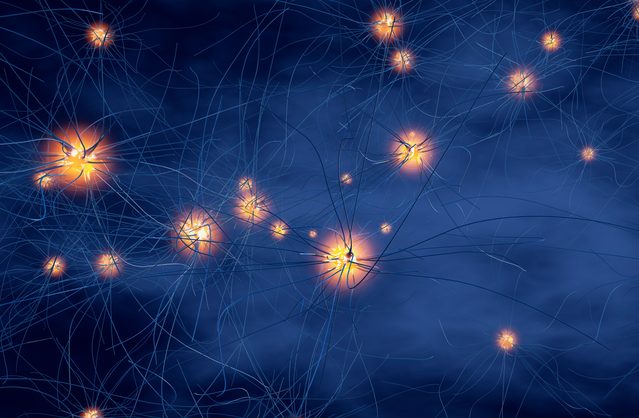
If we can predict an adversary’s next move, we already have an advantage.
Over millennia, those analysing warfare have identified rules, moves and countermoves, but also strengths and weaknesses on both sides. While sovereign capability continues to grow, the numbers available for compulsory service in burgeoning populations lead to a distinct imbalance. Australia cannot match like for like, and predictability creates vulnerability. Our national security and intelligence agencies must be innovative. Harnessing all of the skills available in our nation can help drive that innovation.
Diversity strategies have come into play for this reason. However, these strategies often focus on demographic details—not on how people think.
When those in a cohort of intelligence practitioners are cognitively similar, there’s a propensity for homogeneous thinking. This fuels confirmation bias, reduces critical thinking and increases predictability, making things easier for our adversaries.
To ensure innovative thinking, we need individuals who are less susceptible to groupthink. We need people who are neurodivergent.
An individual is considered neurodivergent when they interact with external stimuli, process information, learn and/or behave in ways that are inconsistent with society’s determination of ‘typical’. With the human brain having more than 86 billion neurons, the possibilities for wiring differences are astronomical. Unsurprisingly, the human population includes multiple ‘neurotypes’. Like biodiversity, these variances are essential.
Unfortunately, in diversity initiatives, neurodivergent folk tend to be overlooked and undersupported.
Neurodivergence such as autism, dyslexia, attention deficit hyperactivity disorder (ADHD) and obsessive-compulsive disorder (OCD) can bring a lot to our national security and intelligence agencies.
Autistic individuals exhibit attention to detail, an affinity for sorting and an ability to spot trends in ambiguous information. Essentially, autistic brains see information that may not be noticed by the neurotypical. As technology advances, so too will intelligence-collection capabilities. The ability to quickly sort copious data, think spatially and intuitively see patterns means autistic individuals make exceptional cyber analysts.
Intelligence practitioners are expected to have high degrees of literacy, which often excludes dyslexic individuals from recruitment. However, lower literacy doesn’t equal poorer intellect. Dyslexic individuals tend to be highly visual and holistic thinkers who see connections that are invisible to others. They are also exceptional narrative thinkers, highly entrepreneurial, great problem solvers, and more intuitive and empathic than most.
ADHD carries negative connotations around impulsivity and inability to focus. But ADHD individuals do focus intensely for long periods when working on their interests. They are outcomes-focused, can manage multiple inputs and work better under stress than other neurotypes. They also process environmental stimuli faster, making them ideal near-real-time analysts.
OCD is widely misunderstood as having an unnatural propensity for organising and preferring certain numbers. Yet, OCD individuals are highly perceptive about risk, are conscientious and work hard to ensure tasks align with procedures. Unsurprisingly, military pilots are screened with a preference towards OCD. When it comes to the art of intelligence, they are particularly adept at assessing threats.
There’s a clear overlap between the skills needed in national security and intelligence agencies and the strengths embodied in neurodivergent individuals. Agencies should reconsider what personifies the ideal intelligence practitioner and expand diversity strategies to include neurodivergence.
Diversification is only helpful, however, if the strengths of those recruited are leveraged appropriately.
Getting the most out of these individuals is not just about getting them over the recruitment hurdle—ongoing support matters.
From the outset, traditional recruitment processes can derail neurodivergent individuals. Evidence suggests that only 30% return for second interviews. The stress of unfamiliar settings or anxiety can prevent many from articulating their strengths. That’s why the Department of Home Affairs’ Apollo neurodiversity program is already using an inclusive recruitment process. Other opportunities to demonstrate role suitability include non-verbal interviews, remote assessments, internships and problem-solving tests.
It’s important not to refer to neurodivergence as a ‘disability’—it’s a difference.
Neurodivergent individuals see life through different lenses. Yet initiatives to recruit them are usually combined with initiatives aimed at employing people with disability. Certainly, there are individuals whose divergence is so great that they become incapable in most environments, but divergence is not a disability or a disease.
Seeing neurodivergence as a disability means that only those with severe needs are accommodated, leaving the majority to adapt to neurotypical practices, mask divergencies and tolerate visceral discomfort.
Ability doesn’t exist in a vacuum. The society to which one belongs determines ‘fit’. Rather than an individual’s constitution, it’s lack of inclusion that makes a world inaccessible.
Agencies should establish zero tolerance for bias and emphasise that nobody will be discounted for disclosing their neurotype. When we create psychologically safe environments and remove stressors, we enable best performance.
While most agencies have compulsory training in equity and diversity, the groups discussed are usually limited to gender, sexuality and culture. Including neurotypes would improve awareness and support zero tolerance for bias.
For autistic individuals, external stimuli can cause sensory overload. Crowded spaces, excess noise, bright lights and certain textures can cause discomfort. Reducing stimuli where practicable is desirable. That can be helped a great deal through workplace design and ergonomics.
While secure facilities impose some limitations, adjustments like noise-cancelling headphones, desks away from high-traffic areas and flexible attire are possible. As no one package fits all, leaders should seek to understand individual needs. No matter what someone’s neurotype is, reducing ambiguity, providing individualised attention and accommodating idiosyncrasies all help maximise their contribution.
Clearly, people with neurodivergence have much to offer in the national security space. In a time of constant flux, national security and intelligence leaders should be seeking out and supporting neurodiverse employees so that they can effectively leverage their skills to help keep Australia safe.

